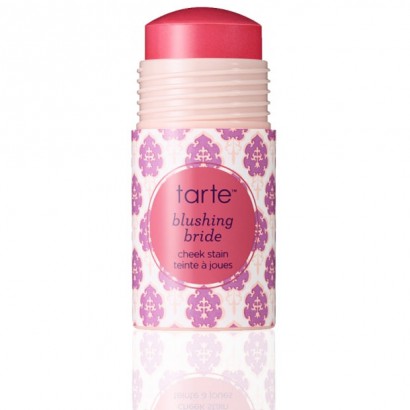Pink of Health: What type of blusher to use?
mis à jour le 6 October 2015 à 23:15
Flushed cheeks give off a healthy and glowing look. Unfortunately not all of us are blessed with naturally rosy cheeks, so we have to fake it to make it.
Rosy and flushed cheeks have long been a coveted beauty feature amongst women from different generations. Chinese women used to moisten red prayer paper and rub them on their cheeks and lips as a makeshift lip and cheek rouge. In the United Kingdom, the upper class resorted to pinching their cheeks to achieve that rosy hue as makeup was only worn by the ladies of the night.
While flushed cheeks give off a healthy and glowing look, unfortunately not all of us are blessed with naturally rosy ones, so we have to fake it to make it. And thank goodness the beauty industry has advanced so much since ancestral times - imagine having to pinch yourself every few minutes!
There are many shades of blush available on the market for that extra glow and they also come in various formulations suited to different skin types and needs. Sometimes, even we get a little confused just by looking at the racks of available blushers in the store but have no fear, for we've done the arduous deed so you don't have to.
POWDER BLUSH
This is the most common type of blusher on the market. It has a dry and light texture and can vary from peachy tones to the very pink. Powder blushers are buildable and depending on the fineness of the pigment, they can be great for stage makeup as well. This is suitable for people with normal to oily skin.
CHEEK STAIN
A cheek stain is much more lasting than powder and it does not require reapplication. The challenge is to rub it into your cheeks quickly and evenly as the formula can set quickly. This option suits all skin types as it is a light formula that sits on the surface of the skin. The colour may look much darker in the bottle, but all you need is a drop for both cheeks.
CREAM BLUSH
Cream blushers are heavily pigmented and give your cheeks a nice sheen after application. It is usually applied with your fingertips or a soft makeup sponge as it spreads easily. However, people with oily skin might want to stay away from this type of blush as it might make you look oilier than you are.
CUSHION BLUSH
The Korean cushion makeup trend has also extended itself to blush. Cushion blushers have a light mousse texture that helps give your skin a dewy look. It spreads easily for a subtle but vibrant cheek hue.
MINERAL BLUSH
These usually come in the form of a loose powder and can be highly pigmented, depending on the quality of the minerals. The minerals are non-comodogenic and it can be mixed with a drop of aloe vera gel to create your own cream blush. Mineral blushers require a kabuki brush to buff the pigment into the skin.
Now that you know your powders from your cushions, go forth and add a few new blushers to your stash this weekend!
Cheryl Lee



